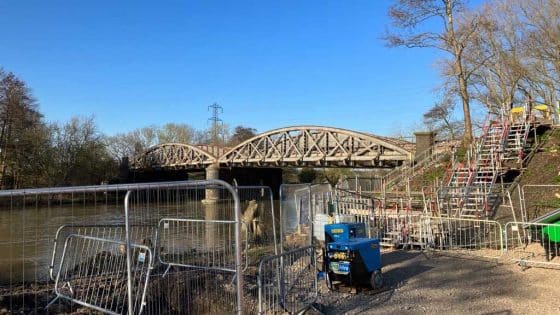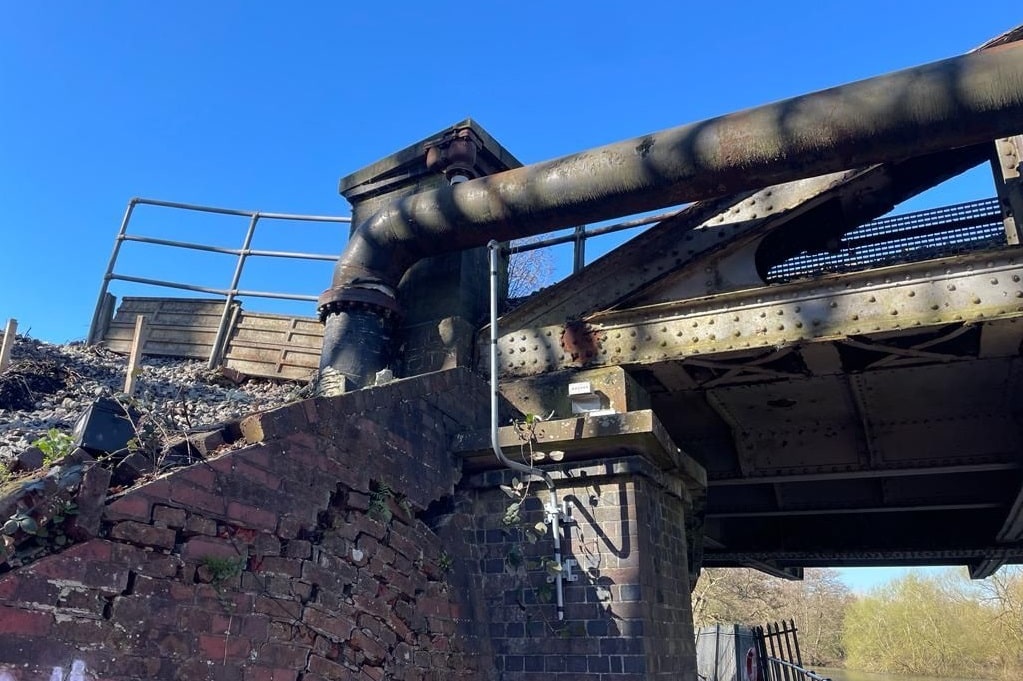Rail closure due to work on Nuneham Viaduct to last until June

This post was originally published on this site

The rail line between Didcot Parkway and Oxford will be closed until June due to work on the Nuneham Viaduct, Network Rail Western has confirmed.
The rail line between Didcot Parkway and Oxford will be closed until June due to work on the Nuneham Viaduct, Network Rail Western has confirmed.
The viaduct, which crosses the River Thames near Abingdon in Oxfordshire, was closed on 3 April after Network Rail’s monitoring equipment installed at the site showed increasing movement in the structure.
Nuneham Viaduct was built in 1929 and is formed by of a pair of steel bowstring spans with a brick-built pier in the centre of the river.
Movement from the Nuneham Viaduct has “significantly worsened in recent weeks”, a Network Rail spokesperson last week told NCE. However, they declined to comment on where the movement within the structure had occurred but NCE understands that the issue is linked to one of the abutments.
Here’s what Nuneham viaduct looks like from track level. Trains were running here on Monday morning, so it has clearly got a lot worse since then. This the Oxford-Didcot line, a national rail artery pic.twitter.com/6oPjCLmZgP
— Paul Clifton (@PaulCliftonBBC) April 7, 2023
A statement today from Network Rail Western said: “We are now working to install a temporary structure that will stabilise the viaduct at Nuneham in Oxfordshire in order for trains to run again between Didcot Parkway and Oxford by 10 June.
“Our engineers have been working round the clock since the line was closed for safety concerns on April 4 and are now able to confirm this timescale.
“To help keep passengers moving GWR, CrossCountry, Chiltern Railways and Network Rail are working closely together with a revised timetable in operation for the duration of the line closure, with a rail replacement service and local shuttle services running.”
“We will be able to share our detailed plans on Wednesday 12th April.”
Network Rail was aware of an issue several weeks ago and had been working to resolve the problem before the rail infrastructure operator was forced to close the structure.
Nicky Hughes, Network Rail Western’s communications director, last week said: “We’re really sorry for passengers and freight users that we’ve had to close this critical stretch of line between Didcot and Oxford. That’s because the [Nuneham Viaduct] is starting to move and it’s moving now to the extent that we don’t consider it safe to run trains over.
“We’ve been monitoring this bridge for a number of months now and we’ve been taking measures to try and make the foundations of the bridge more secure. But unfortunately those measures don’t appear to be working. And of course we’ve had some significant rainfall in the last month as well. And in the last weekend we’ve seen a lot of movement of the structure.
“Because the structure is not safe , we cannot run passenger and freight trains over it.”
She also said: “We’re working with a number of experts from across a range of different engineering disciplines to try and make the bridge safe for us to run passenger and freight trains over it whilst we then put in place a long-term solution that will enable us to get back to what we call line speed. But it will be within weeks, it won’t be within days.”
In addition, a statement for the Rail Freight Group revealed that speed restrictions had been in place for several months across the Nuneham Viaduct, suggesting that the issues have been known for some time, and that remedial work was already planned over Easter.
“The failure of the Nuneham Viaduct between Oxford and Didcot is currently causing some significant disruption for freight services,” said Rail Freight Group director general Maggie Simpson. “The bridge, built a century ago, has been declared unsafe by Network Rail, meaning that passenger trains are suspended and the 40 or so daily freight trains diverted, mostly via London and the West Coast Main Line.”
Like what you’ve read? To receive New Civil Engineer’s daily and weekly newsletters click here.




Responses